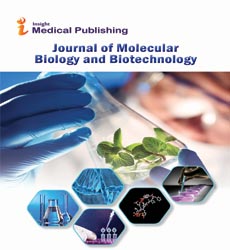A Brief Note on Plant Molecular Biology and Cell Dividers
Aleksenko L Arima*
Department of Obstetrics and Gynaecology, Juntendo University, Tokyo, Japan
- *Corresponding Author:
- Aleksenko L Arima
Department of Obstetrics and Gynaecology,
Juntendo University,
Tokyo,
Japan,
E-mail: nakamtomarima@hirakata.kmu.ac.jp
Received Date: July 2, 2021;Accepted Date: July 16, 2021; Published Date: July 23, 2021
Citation: Arima AL (2021) A Brief Note on Plant Molecular Biology and Cell Dividers. J Mol Biol Biotech Vol.6 No.4:01.
Description
The incredibly long existences of plants and their recovery limit rely upon the action of plant undifferentiated cells. As in creatures, immature microorganisms dwell in undifferentiated organism specialties, which produce flags that direct the harmony between self-restoration and the age of little girl cells that separate into new tissues. Plant immature microorganism specialties are situated inside the meristems, which are coordinated designs that are answerable for most post-early stage improvement. The persistent organ creation that is normal for plant development requires a powerful administrative organization to keep the harmony between pluripotent undifferentiated cells and separating descendants. Segments of this organization have now been clarified and give a special chance to looking at methodologies that were created in the creature and plant realms, which underlie the rationale of undeveloped cell conduct.
There are numerous varieties in the structure and substance of plant cell dividers. The dividers might be plastic or they might be inflexible, penetrable or impermeable, impregnated with plastics or covered with sludge, established in layers to shape filaments or broke up in spots to frame pores. These varieties are of essential significance to the legitimate organic working of plant cells and organs, and hence the design of the cell divider is frequently our best sign of the idea of the protoplast which abides inside.
The atomic construction of plant cell dividers
Polysaccharides are the primary segments of all plant cell dividers. The polysaccharides of the cell divider are comprised of sugars which are connected to one another by glycosidic bonds to frame the polymer chains. Every polysaccharide contains specific sorts of sugars which are joined to one another in trademark examples of linkage position and grouping. The different polysaccharide chains of the plant cell divider are associated with one another specifically, and they structure an incorporated organization. The properties of this organization depend not just on the sums, trademark properties and directions of the individual polysaccharides, yet in addition on the nature and recurrence of the interconnecting linkages between them.
Hormonal control of cell divider biosynthesis and separation
We realize that cell divider biosynthesis and the change of cell dividers are significant parts of cell separation, and that cell separation can be controlled-or if nothing else influenced-by plant chemicals. Be that as it may, the components by which specific plant chemicals influence the structure, substance and combination of specific cell dividers are completely obscure.
Critical advancement has been made as of late in clarifying the part of auxins in cell divider extension. Indoleacetic corrosive and a few comparative accumulate cause a stamped expansion in the pace of coleoptile cell stretching. Coleoptiles ordinarily get auxin from the apical locale of the shoot. Notwithstanding, extracted coleoptiles can react to auxin exogenously provided in arrangement, extending at a pace of 10-30% each hour. The hormonal enactment of this siphon brings about a lower pH in the phone dividers which, thusly, seems to initiate chemicals in the phone divider which are prepared to do specifically 'extricating' the polysaccharide network with the goal that the dividers can extend all the more quickly.
A further significant part of hormonal impacts on plant cell divider biosynthesis and separation has been uncovered by concentrates on the progressions in microtubule direction brought about by exogenously provided chemicals. In bean epicotyl fragments, kinetin restrains prolongation and advances a thickening or parallel extension of the cells. Gibberellins, then again, advance stretching and restrain sidelong development. The microtubules neighbouring the plasma lemma in cells of epicotyl segments provided with kinetin and auxin are discovered to be situated corresponding to the phone hub. Nonetheless, in areas provided with gibberellin and auxin the microtubules are situated cross over to the cell hub. The microtubules are haphazardly arranged in segments provided with auxin alone. Along these lines, kinetin and gibberellins (yet not auxins) seem, by all accounts, to be ready to control the bearing of cell development by some way or another deciding the direction of the microtubules. The direction of the microtubules, thus, decides the direction of the cellulose micro fibrils being stored in the cell divider-which decides the bearing where the dividers can most effectively grow.
Open Access Journals
- Aquaculture & Veterinary Science
- Chemistry & Chemical Sciences
- Clinical Sciences
- Engineering
- General Science
- Genetics & Molecular Biology
- Health Care & Nursing
- Immunology & Microbiology
- Materials Science
- Mathematics & Physics
- Medical Sciences
- Neurology & Psychiatry
- Oncology & Cancer Science
- Pharmaceutical Sciences
